Processors for Embedded Vision
THIS TECHNOLOGY CATEGORY INCLUDES ANY DEVICE THAT EXECUTES VISION ALGORITHMS OR VISION SYSTEM CONTROL SOFTWARE
This technology category includes any device that executes vision algorithms or vision system control software. The following diagram shows a typical computer vision pipeline; processors are often optimized for the compute-intensive portions of the software workload.

The following examples represent distinctly different types of processor architectures for embedded vision, and each has advantages and trade-offs that depend on the workload. For this reason, many devices combine multiple processor types into a heterogeneous computing environment, often integrated into a single semiconductor component. In addition, a processor can be accelerated by dedicated hardware that improves performance on computer vision algorithms.
General-purpose CPUs
While computer vision algorithms can run on most general-purpose CPUs, desktop processors may not meet the design constraints of some systems. However, x86 processors and system boards can leverage the PC infrastructure for low-cost hardware and broadly-supported software development tools. Several Alliance Member companies also offer devices that integrate a RISC CPU core. A general-purpose CPU is best suited for heuristics, complex decision-making, network access, user interface, storage management, and overall control. A general purpose CPU may be paired with a vision-specialized device for better performance on pixel-level processing.
Graphics Processing Units
High-performance GPUs deliver massive amounts of parallel computing potential, and graphics processors can be used to accelerate the portions of the computer vision pipeline that perform parallel processing on pixel data. While General Purpose GPUs (GPGPUs) have primarily been used for high-performance computing (HPC), even mobile graphics processors and integrated graphics cores are gaining GPGPU capability—meeting the power constraints for a wider range of vision applications. In designs that require 3D processing in addition to embedded vision, a GPU will already be part of the system and can be used to assist a general-purpose CPU with many computer vision algorithms. Many examples exist of x86-based embedded systems with discrete GPGPUs.
Digital Signal Processors
DSPs are very efficient for processing streaming data, since the bus and memory architecture are optimized to process high-speed data as it traverses the system. This architecture makes DSPs an excellent solution for processing image pixel data as it streams from a sensor source. Many DSPs for vision have been enhanced with coprocessors that are optimized for processing video inputs and accelerating computer vision algorithms. The specialized nature of DSPs makes these devices inefficient for processing general-purpose software workloads, so DSPs are usually paired with a RISC processor to create a heterogeneous computing environment that offers the best of both worlds.
Field Programmable Gate Arrays (FPGAs)
Instead of incurring the high cost and long lead-times for a custom ASIC to accelerate computer vision systems, designers can implement an FPGA to offer a reprogrammable solution for hardware acceleration. With millions of programmable gates, hundreds of I/O pins, and compute performance in the trillions of multiply-accumulates/sec (tera-MACs), high-end FPGAs offer the potential for highest performance in a vision system. Unlike a CPU, which has to time-slice or multi-thread tasks as they compete for compute resources, an FPGA has the advantage of being able to simultaneously accelerate multiple portions of a computer vision pipeline. Since the parallel nature of FPGAs offers so much advantage for accelerating computer vision, many of the algorithms are available as optimized libraries from semiconductor vendors. These computer vision libraries also include preconfigured interface blocks for connecting to other vision devices, such as IP cameras.
Vision-Specific Processors and Cores
Application-specific standard products (ASSPs) are specialized, highly integrated chips tailored for specific applications or application sets. ASSPs may incorporate a CPU, or use a separate CPU chip. By virtue of their specialization, ASSPs for vision processing typically deliver superior cost- and energy-efficiency compared with other types of processing solutions. Among other techniques, ASSPs deliver this efficiency through the use of specialized coprocessors and accelerators. And, because ASSPs are by definition focused on a specific application, they are usually provided with extensive associated software. This same specialization, however, means that an ASSP designed for vision is typically not suitable for other applications. ASSPs’ unique architectures can also make programming them more difficult than with other kinds of processors; some ASSPs are not user-programmable.

ProHawk Gains NVIDIA Preferred Partner Status for its AI-enabled Computer Vision Solutions
ProHawk solutions validated in NVIDIA’s labs over the past 18 months, and now embedded with NVIDIA Metropolis, Holoscan, and Jetson platforms, with more integrations coming. LAKE MARY, FLORIDA, February 27, 2024 — ProHawk Technology Group (ProHawk AI), a leading AI-enabled computer vision company, today announced that it has been selected as a Preferred partner within
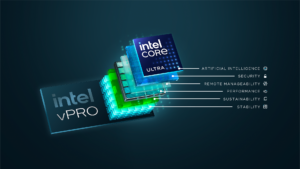
Intel Core Ultra Extends AI PCs to the Enterprise with New Intel vPro Platform
New vPro platform delivers unmatched productivity, security, manageability and stability for businesses of all sizes. What’s New: Today at MWC 2024, Intel extends the benefits of the AI PC to commercial customers with the new Intel vPro® platform. The enhanced features of Intel® Core™ Ultra processors with available built-in Intel® Arc™ GPUs, and Intel® Core™

Intel Announces New Edge Platform for Scaling AI Applications
The edge-native software platform simplifies development, deployment and management of edge AI applications. What’s New: At MWC 2024, Intel announced its new Edge Platform, a modular, open software platform enabling enterprises to develop, deploy, run, secure, and manage edge and AI applications at scale with cloud-like simplicity. Together, these capabilities will accelerate time-to-scale deployment for
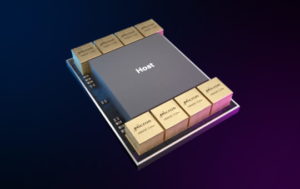
Micron Commences Volume Production of Industry-leading HBM3E Solution to Accelerate the Growth of AI
Micron HBM3E helps reduce data center operating costs by consuming about 30% less power than competing HBM3E offerings BOISE, Idaho, Feb. 26, 2024 (GLOBE NEWSWIRE) — Micron Technology, Inc. (Nasdaq: MU), a global leader in memory and storage solutions, today announced it has begun volume production of its HBM3E (High Bandwidth Memory 3E) solution. Micron’s 24GB 8H

Qualcomm Continues to Bring the Generative AI Revolution to Devices and Empowers Developers with Qualcomm AI Hub
Highlights: Qualcomm now enables at-scale on-device AI commercialization across next-generation PCs, smartphones, software-defined vehicles, XR devices, IoT and more – bringing intelligent computing everywhere. Qualcomm AI Hub offers 75+ optimized AI models for Snapdragon and Qualcomm platforms, reducing time-to-market for developers and unlocking the benefits of on-device AI for their apps. These models are also

NVIDIA RTX 500 and 1000 Professional Ada Generation Laptop GPUs Drive AI-enhanced Workflows From Anywhere
Thin and light designs deliver advanced AI, compute and graphics horsepower for professionals on the go. With generative AI and hybrid work environments becoming the new standard, nearly every professional, whether a content creator, researcher or engineer, needs a powerful, AI-accelerated laptop to help users tackle their industry’s toughest challenges — even on the go.

Advanced Semiconductor Packaging Trends in AI and HPC
Advanced semiconductor packaging technologies like 2.5D and 3D hybrid bonding, along with emerging solutions like silicon photonics, are critical in optimizing system performance and fostering the next wave of artificial intelligence (AI) and high-performance computing (HPC) chip innovation. The “Advanced Semiconductor Packaging 2024-2034: Forecasts, Technologies, Applications” report recently published by IDTechEx explores the evolving landscape

Enabling the AI Infrastructure on Arm
News Highlights Announcing two new Arm Neoverse Compute Subsystems (CSS) built on brand new third generation Neoverse IP: Arm Neoverse CSS V3, the first Neoverse CSS product for the high-performance V-series portfolio with a 50% performance-per-socket improvement over CSS N2 Arm Neoverse CSS N3, an extension of our leading N-series CSS roadmap, delivering 20% higher

Optimizing Generative AI for Edge Devices
This blog post was originally published at Qualcomm’s website. It is reprinted here with the permission of Qualcomm. How pruning, quantization and knowledge distillation help fit generative AI into resource-limited edge devices As of April 2023, one in three U.S. adults have used generative artificial intelligence (AI): Are you among them?1 When OpenAI unveiled ChatGPT

Shining Brighter Together: Google’s Gemma Optimized to Run on NVIDIA GPUs
New open language models from Google accelerated by TensorRT-LLM across NVIDIA AI platforms — including local RTX AI PCs. NVIDIA, in collaboration with Google, today launched optimizations across all NVIDIA AI platforms for Gemma — Google’s state-of-the-art new lightweight 2 billion– and 7 billion-parameter open language models that can be run anywhere, reducing costs and
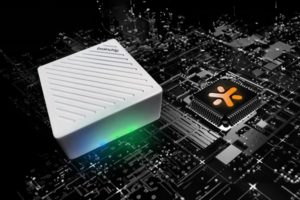
BrainChip Begins Accepting Pre-orders of the Akida Edge AI Box
Laguna Hills, Calif. – February 20, 2024 – BrainChip Holdings Ltd (ASX: BRN, OTCQX: BRCHF, ADR: BCHPY), the world’s first commercial producer of ultra-low power, fully digital, event-based, neuromorphic AI, today re-opened its product shopping portal and will be accepting pre-orders of its recently announced Akida Edge AI Box. The Akida™ powered Edge AI box is

Benchmarking Camera Performance on Your Workstation with NVIDIA Isaac Sim
This blog post was originally published at NVIDIA’s website. It is reprinted here with the permission of NVIDIA. Robots are typically equipped with cameras. When designing a digital twin simulation, it’s important to replicate its performance in a simulated environment accurately. However, to make sure the simulation runs smoothly, it’s crucial to check the performance

CES 2024 Showed that the Future of Cars will be Defined by AI
IDTechEx‘s new report, “Future Automotive Technologies 2024-2034: Applications, Megatrends, Forecasts“, highlights the biggest changes coming to cars over the next ten years. Electrification will change what powers cars, and automation will change how they are driven, but one of the biggest opportunities is connectivity and software definition, which will change how cars are monetized. This

Ecosystem Collaboration Drives New AMBA Specification for Chiplets
This blog post was originally published at Arm’s website. It is reprinted here with the permission of Arm. AMBA is being extended to the chiplets market with the new CHI C2C specification. As Arm’s EVP and Chief Architect Richard Grisenthwaite said in this blog, Arm is collaborating across the ecosystem on standards to enable a

BrainChip Demonstrates Human Behavior Detection at IFS Direct Connect 2024
Laguna Hills, Calif. – February 15, 2024 – BrainChip Holdings Ltd (ASX: BRN, OTCQX: BRCHF, ADR: BCHPY), the world’s first commercial producer of ultra-low power, fully digital, event-based, neuromorphic AI, will host an exhibit demonstrating human behavior AI at IFS Direct Connect 2024 at the San Jose McEnery Convention Center in San Jose, California February 21.

Generative AI in 2024: The 6 Most Important Consumer Tech Trends
This blog post was originally published at Qualcomm’s website. It is reprinted here with the permission of Qualcomm. Qualcomm executives reveal key trends in AI, consumer technology and more for the future Not that long ago, the banana-peel-and-beer-fueled DeLorean in “Back to the Future” was presented as comedy. Yet today, 10% of cars are electric-powered.1

Adapting Strategies: Industrial Machine Vision’s Response to Short-term Challenges
This market research report was originally published at the Yole Group’s website. It is reprinted here with the permission of the Yole Group. In 2023, the total machine vision market generated $6.9 billion in revenue. When will growth return? OUTLINE Industrial machine vision: a $7.8 billion market in 2029 compared to $6.9 billion in 2023.
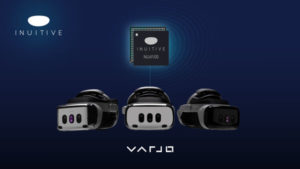
Varjo Selects Inuitive’s NU4100 Vision Processor for Its Next Generation XR-4 Series Virtual and Mixed Reality Products
The XR-4 Series leverages the unparalleled capabilities of the NU4100 vision processor to achieve high-resolution, low-latency video streaming from multiple cameras, bridging the gap towards human-like visual perception Ra’anana, Israel, February 05, 2024 – Varjo, the technology leader in industrial-grade VR/XR hardware and software, recently announced its next-generation XR-4 Series headsets. The XR-4 Series deploys

Generative AI, High Performance Computing to Fuel High Bandwidth Memory Market Growth
This market research report was originally published at the Yole Group’s website. It is reprinted here with the permission of the Yole Group. The market for high bandwidth memory (HBM) is poised for rapid growth over the next five years, announces Yole Group in its latest analyses. According to the analysts, it is led by
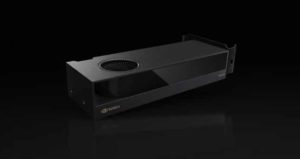
NVIDIA RTX 2000 Ada Generation GPU Brings Performance, Versatility for Next Era of AI-accelerated Design and Visualization
Latest RTX technology delivers cost-effective package for designers, developers, engineers, and embedded and edge applications. Generative AI is driving change across industries — and to take advantage of its benefits, businesses must select the right hardware to power their workflows. The new NVIDIA RTX 2000 Ada Generation GPU delivers the latest AI, graphics and compute

